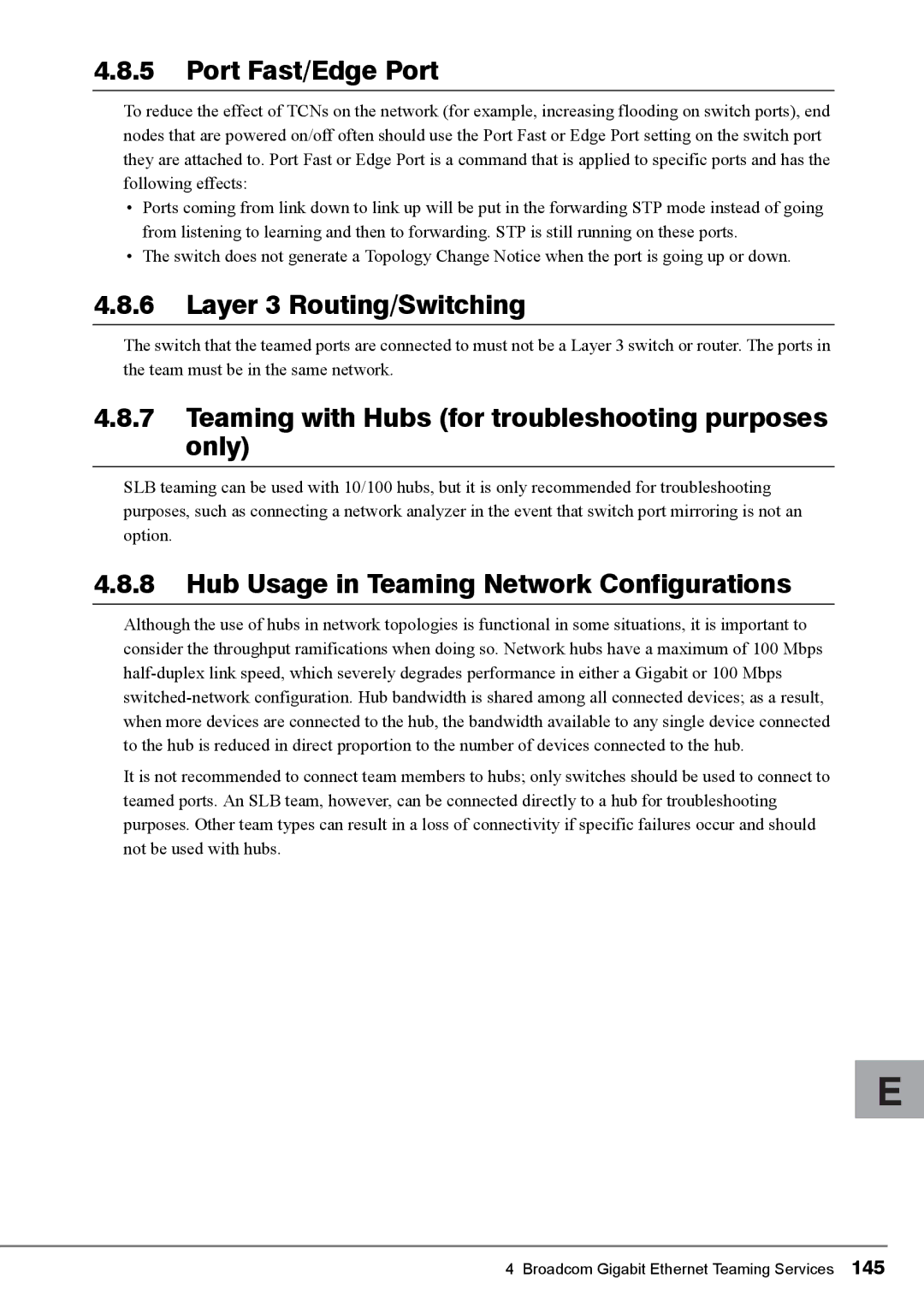
4.8.5Port Fast/Edge Port
To reduce the effect of TCNs on the network (for example, increasing flooding on switch ports), end nodes that are powered on/off often should use the Port Fast or Edge Port setting on the switch port they are attached to. Port Fast or Edge Port is a command that is applied to specific ports and has the following effects:
•Ports coming from link down to link up will be put in the forwarding STP mode instead of going from listening to learning and then to forwarding. STP is still running on these ports.
•The switch does not generate a Topology Change Notice when the port is going up or down.
4.8.6Layer 3 Routing/Switching
The switch that the teamed ports are connected to must not be a Layer 3 switch or router. The ports in the team must be in the same network.
4.8.7Teaming with Hubs (for troubleshooting purposes only)
SLB teaming can be used with 10/100 hubs, but it is only recommended for troubleshooting purposes, such as connecting a network analyzer in the event that switch port mirroring is not an option.
4.8.8Hub Usage in Teaming Network Configurations
Although the use of hubs in network topologies is functional in some situations, it is important to consider the throughput ramifications when doing so. Network hubs have a maximum of 100 Mbps
It is not recommended to connect team members to hubs; only switches should be used to connect to teamed ports. An SLB team, however, can be connected directly to a hub for troubleshooting purposes. Other team types can result in a loss of connectivity if specific failures occur and should not be used with hubs.
E
